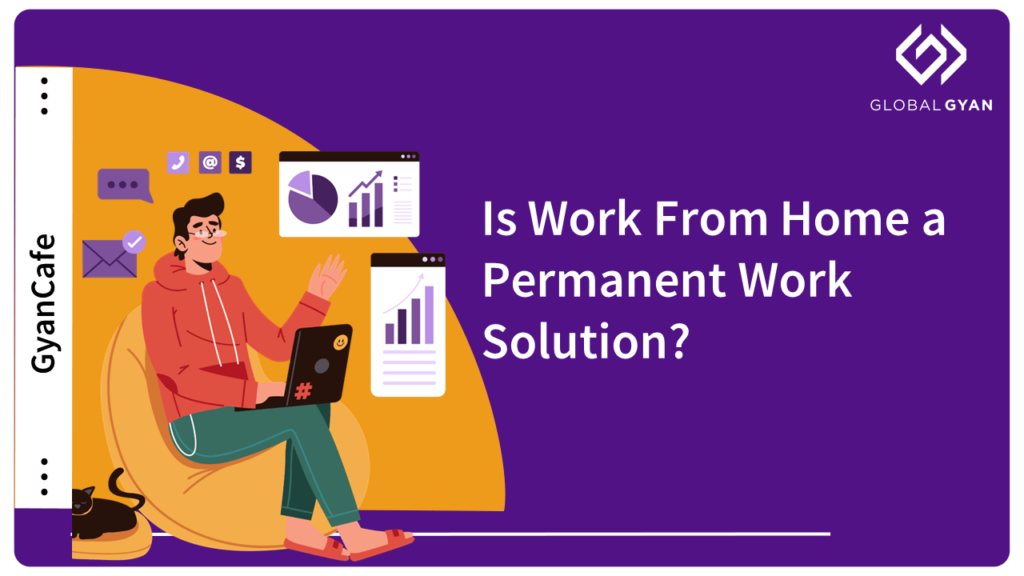Is Work From Home a Permanent Work Solution?

It is 127 days since I went to the office, since I physically met anyone for professional reasons. And it appears that work-wise we are doing fine with this Work From Home (WFH) model. Our user volumes are up more than 2X and we have done more things in the last 3 months than I ever imagined GlobalGyan would be able to.
In the initial months, we took some effort to get everyone to communicate with each other and have virtual ice-breaker sessions. But soon, the teams discovered their rhythm of working together, with different approaches and tools working for different groups.
Then the question came up, Should we give up our office space? For a small business like ours, office rent (and related expenses) constituted nearly 10-12% of our total monthly cost. The idea has been very tempting.
Meanwhile, I heard from other fellow-entrepreneurs and corporate leaders that as they prepared for the Isolation Economy, they had made WFH permanent, at least for the next year. The benefits go beyond just financial.
- Employees can be located anywhere; they don’t have to migrate to the cities in search of jobs when they can now work from anywhere.
- Employers have a larger pool of talent to choose from. I was amused and then amazed when a young, Indore-based entrepreneur told me he was hiring digital marketing employees in Vietnam and Indonesia.
- Diversity is likely to, finally, get a big boost as more women can participate in roles that they might have missed earlier.
Nevertheless, I do not believe that organisations, whether small or large, should become 100% WFH. There are three reasons that I believe necessitate a version of the Work From Office (WFO) model must continue.
1. Innovation does not happen during meetings
How often have we not had a spark of a great idea during a casual conversation or banter that happened at the cafeteria or down the hall? Serendipity is the biggest source of innovation and we cannot recreate that on a Teams or Zoom meeting.
Many jobs that are designed to perform a series of routine tasks, alone or in teams, can very well be 100% WFH. However, all integrator roles, those that involve considerable interface with other parts of the organisation or externally, will benefit from getting together, at least once in a while.
2. Culture is not built remotely
Our ability to work remotely during this pandemic arises from the fact that we have developed rapport with our colleagues and teams over time. We are reaping the benefit of the relationships, connections and alignment that has been created in the past. Try building all that afresh in a virtual environment… it’s probably not impossible but extremely improbable.
In fact, organisation culture development will now be even more difficult than it always has been. Leadership and group behaviours will have to be redesigned for this virtual-led working environment. The extremely effective idea of “management by walking around” requires high degree of managerial involvement with teams, which requires more than Teams.

3. We are not yet ready for 100% WFH
Even though we have managed to WFH for the past 3 months, the truth is that we are not prepared for it. The infrastructure, the space or the culture that we have at homes were not designed for working diligently.
For all the talk of women empowerment due to WFH, I heard from a woman employee that more house-work is expected of her now, because she is at home. Earlier, she would be away at office for a certain number of hours and nobody could disturb her. Other employees complained of unexpected power-cuts or Internet downtime.

Of course, these are teething problems and will be addressed over time. But it will take time. For every employee to build the infrastructure redundancy that is taken for granted in an office. Or have dedicated space and privacy at home to work.
When the lockdown ends (that is also an If statement), I believe the work that we do will define the % time split between WFH and WFO. It will not be 100:0 as it is now, nor will it be 0:100 as it was earlier. The somewhere in between will need to be designed.
An emerging idea for our company is to have everyone come in to office on one day of the week, and for each team to, if they feel the need for it, choose one other day that they would work together at the office. So, that’s 80:20 or 60:40, in favour of WFH.
Time will tell!


